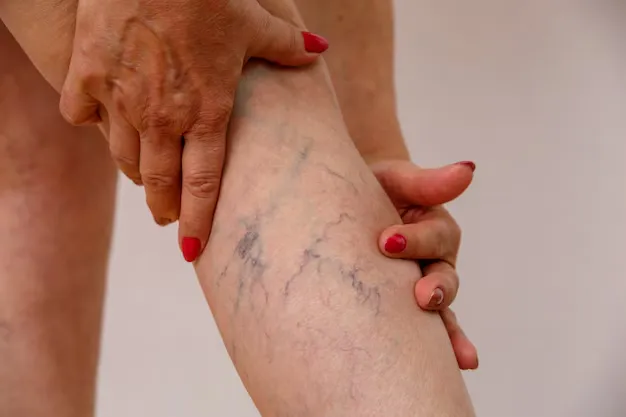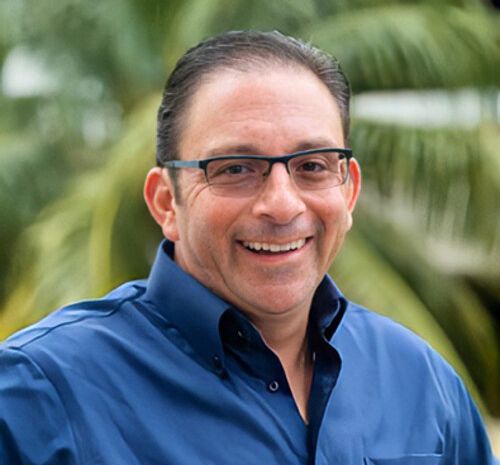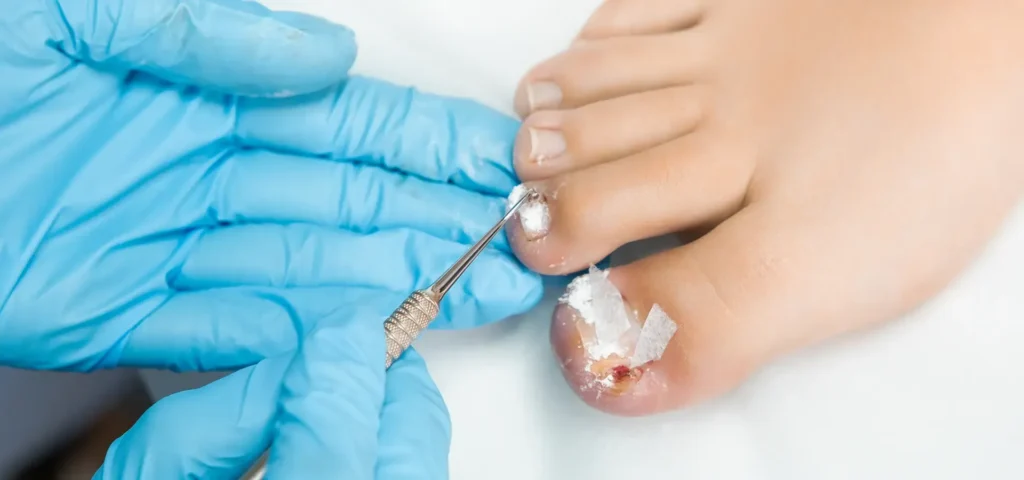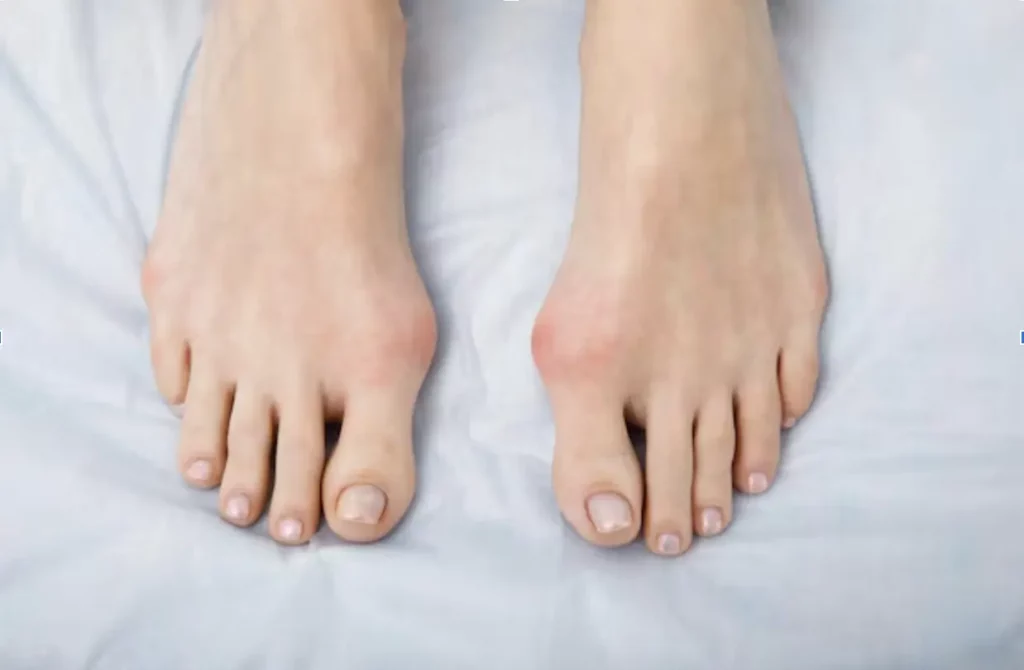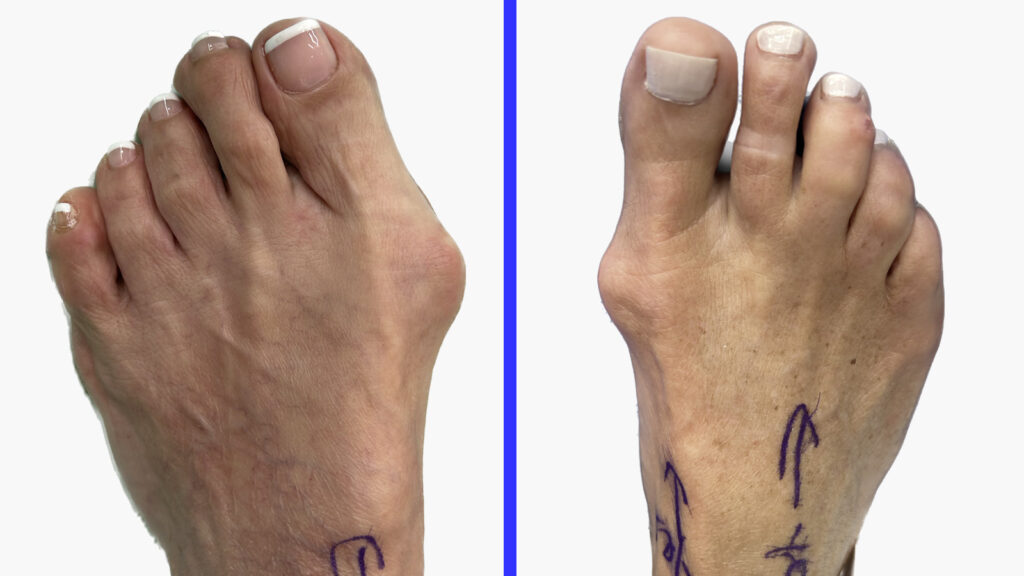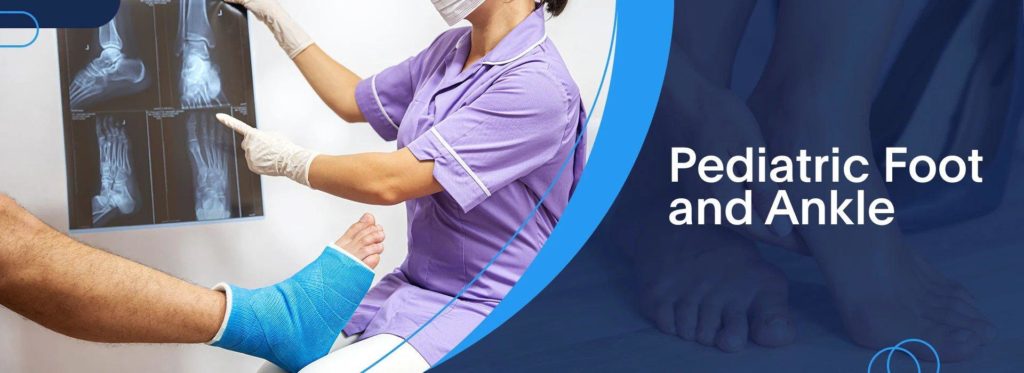Maybe you’ve noticed them on your thighs, behind your knees, or around your ankles. Thin, red, blue, or purple lines that look a little like spider webs under your skin.
They don’t usually hurt, but they’re hard to ignore once you see them.
These are spider veins, and they’re a lot more common than most people think. In fact, it’s estimated that over half of all adults will develop them at some point.
Still, just because they’re common doesn’t mean they should be dismissed, especially if they’re spreading, becoming painful, or making you feel self-conscious.
At the Foot, Ankle, & Leg Vein Center, we help patients understand and manage these concerns every day, providing both medical insight and effective treatment options.
In this article, we’ll break down exactly what causes spider veins, who’s most at risk, and most importantly, what you can do to treat or prevent them.
Whether you’re dealing with a few faint lines or a cluster that seems to be growing, this guide gives you the answers you need.
What Are Spider Veins, Exactly?
Spider veins, also called telangiectasias, are small, damaged blood vessels that appear close to the surface of the skin.
Unlike varicose veins, which tend to be larger, twisted, and raised, spider veins are usually flat or only slightly raised and often form intricate patterns resembling tree branches or spider webs.
They’re most often found on the legs, but can also appear on the face, particularly around the nose and cheeks.
Though typically not dangerous, they can sometimes cause burning, aching, or throbbing sensations, especially after standing for long periods.
What Causes Spider Veins?
Spider veins develop when tiny blood vessels near the skin’s surface dilate or become damaged. Several factors can contribute to this, often working together over time.
1. Genetics
If your parents or grandparents had spider veins, there’s a good chance you will too. Genetics play a major role in how your veins function and how likely they are to weaken or lose elasticity over time.
2. Hormones
Hormonal shifts (especially during pregnancy, menopause, or while taking birth control pills) can weaken vein walls and valves. This makes spider veins more common in women, particularly as they age.
3. Prolonged Standing or Sitting
Jobs or lifestyles that require long hours on your feet or seated (like teaching, nursing, office work, or hairdressing) can increase pressure in the lower legs, leading to poor circulation and vein damage.
4. Sun Exposure
Frequent sun exposure, especially to fair skin, can break down blood vessels in the face, leading to spider veins around the cheeks and nose.
5. Injury or Trauma
A blow to the skin, prior surgeries, or even aggressive cosmetic procedures can damage underlying capillaries, sometimes triggering spider veins in that area.
6. Aging
As we age, our veins naturally weaken. Valves that once efficiently pushed blood back to the heart can become less effective, leading to pooling and the appearance of visible veins.
What’s the Difference Between Spider Veins and Varicose Veins?
Many patients confuse spider veins with varicose veins, but they are not the same condition, though they can occur together.
Spider veins are small, thin, and often resemble red or blue threads beneath the skin. They are usually flat, painless, and most commonly cosmetic.
Varicose veins, on the other hand, are larger, swollen, and twisted veins that may bulge above the surface of the skin. They are often blue or dark purple and can cause aching, heaviness, and even skin changes or ulcers in more advanced cases.
Can Spider Veins Be a Sign of a Bigger Health Problem?
In most cases, spider veins are not a medical emergency, but they can sometimes signal underlying venous insufficiency, a condition where the valves in your veins don’t work effectively, causing blood to pool in your legs.
Symptoms that may suggest a deeper issue include:
- Leg fatigue, especially in the afternoon or evening
- Swelling around the ankles
- Itching, throbbing, or burning sensations in the legs
- Skin discoloration or dry, scaly areas near the ankles
How to Treat Spider Veins: From At-Home Solutions to Medical Options
While spider veins don’t usually pose a health threat, many people seek treatment for cosmetic reasons, and in some cases, because of discomfort.
Fortunately, there’s a wide range of options, from simple lifestyle changes to advanced medical procedures.
The right solution depends on the severity of the veins, your goals, and any underlying health conditions.
1. Compression Stockings
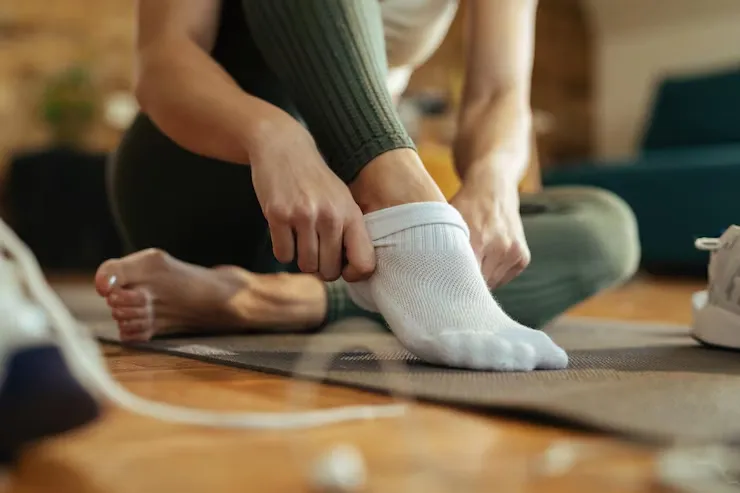
Often, the first line of defense, compression stockings, improve blood flow by gently squeezing the legs.
They reduce pressure on the veins, help prevent further vein damage, and can minimize aching or swelling.
Compression stockings won’t make existing spider veins disappear, but they can prevent new ones from forming, especially if worn regularly during long periods of sitting or standing.
2. Lifestyle Adjustments That Actually Help
Daily habits make a big difference in how spider veins progress.
Here are changes that can support your vein health:
- Move frequently: If you sit or stand for long periods, try to take short walks or stretch every 30 minutes.
- Elevate your legs: Propping your legs up for 15–20 minutes a day can help reduce pressure in your lower veins.
- Maintain a healthy weight: Excess weight puts more pressure on your legs, increasing vein strain.
- Avoid hot baths and saunas: Prolonged heat can cause veins to dilate and worsen spider vein visibility.
- Protect your skin from the sun: Daily sunscreen, especially on the face, prevents UV damage to small capillaries.
These strategies are especially effective when spider veins are still small and not yet widespread.
3. Sclerotherapy: The Gold Standard Treatment
Sclerotherapy is one of the most popular and effective medical treatments for spider veins.
It involves injecting a special solution directly into the affected vein, causing it to seal off and eventually fade from view as the body reabsorbs it.
It’s a minimally invasive procedure, typically performed in under 30 minutes, and doesn’t require anesthesia.
However, if you’re concerned about the injection itself, we can apply a topical numbing agent to the skin to make the experience even more comfortable.
Most patients require 3 to 5 treatment sessions to achieve approximately 80% improvement in the appearance of spider veins.
Results develop gradually over the following weeks, with continued improvement when paired with healthy lifestyle habits and compression use.
Sclerotherapy is especially effective for spider veins on the legs and remains the most recommended treatment by vein specialists worldwide due to its safety, precision, and long-lasting results.
4. Laser Therapy
Laser treatments use targeted light to heat and damage the spider vein, causing it to close and fade.
This method is often used for smaller veins or those located on the face, where precision and minimal skin disruption are essential.
Laser therapy is non-invasive and requires no injections, but it may take several sessions to achieve optimal results.
Some patients report mild redness or swelling after treatment, but this typically resolves within a day or two.
5. Other Minimally Invasive Options
In certain cases, more advanced treatments like radiofrequency ablation or endovenous laser therapy (EVLT) may be recommended, especially if spider veins are accompanied by varicose veins or signs of venous insufficiency.
These procedures are typically guided by ultrasound and performed by vein specialists.
While more intensive than sclerotherapy or surface lasers, they offer long-term results and can address both cosmetic and functional concerns.
6. Natural Supplements and Remedies: Supportive, But Not a Cure
Some people turn to natural or homeopathic remedies to support vein health.
While these options won’t eliminate existing spider veins, certain ingredients may help improve circulation and reduce inflammation when used consistently and safely:
- Horse chestnut extract: Often used to relieve swelling and improve venous tone. Some studies suggest it may help reduce leg heaviness or discomfort.
- Ginger: Known for its anti-inflammatory properties, ginger may support overall blood flow when part of a balanced diet.
- Grape seed extract: Rich in antioxidants and believed to strengthen blood vessel walls.
- Gotu kola: Used in traditional medicine to improve circulation and strengthen connective tissue.
Before starting any supplement, it’s important to speak with a healthcare provider, especially if you’re pregnant, on medication, or managing other health conditions.
How Long Does It Take to See Results from Spider Vein Treatment?
The timeline depends on the type of treatment used and the extent of your spider veins.
- Sclerotherapy results typically appear within 3 to 6 weeks, though larger veins or dense clusters may require multiple sessions.
- Laser therapy often takes 2 to 4 treatments, spaced several weeks apart, with gradual fading over a few months.
It’s important to note that while treated veins won’t return, new spider veins may form over time.
That’s why ongoing prevention strategies and follow-up care with a specialist like Dr. Jason Gold are key to long-term results.
Natural vs. Clinical Treatments: What Actually Works
It’s easy to find DIY advice online, from massage oils to herbal creams, claiming to treat spider veins. While some of these options may feel soothing, the truth is that no natural remedy can actually eliminate spider veins once they’ve developed.
If your goal is to see real, lasting results, medical treatment is the proven route. Techniques like sclerotherapy and laser therapy work by closing off the damaged veins so your body can reabsorb them, significantly improving both appearance and comfort.
At Foot, Ankle, & Leg Vein Center, our doctors offer these evidence-based treatments using a personalized approach.
Their experience in treating both cosmetic and functional vein concerns ensures that each patient receives a plan tailored to their specific needs, whether that means managing discomfort, improving circulation, or simply restoring confidence in the way your legs look.
Wondering which treatment is right for you? Contact us, and our doctors will evaluate your veins in-office and help you understand which options make sense based on your goals and lifestyle.
When Should You See a Doctor About Spider Veins?
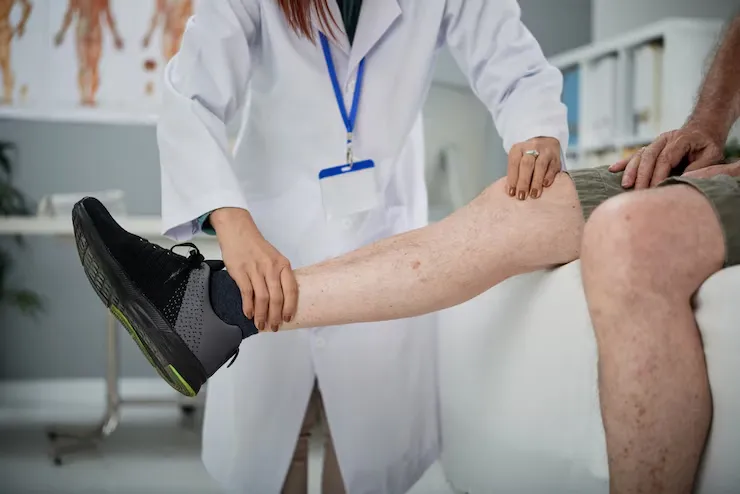
Spider veins aren’t always just cosmetic. In some cases, they can be a sign of deeper circulation issues, especially if they’re accompanied by leg fatigue, swelling, or burning sensations.
You should consider a professional evaluation if:
- You notice your veins are multiplying or darkening
- You experience discomfort, especially after standing
- You have a personal or family history of vein disease
- Your job requires long hours on your feet or sitting
- You’re considering cosmetic treatment and want expert insight
How to Maintain Results After Treatment
To maintain the effects of spider vein treatment and reduce the risk of new ones forming, follow these best practices:
- Wear compression stockings during long flights or when standing for extended periods
- Stay active, walking and stretching help promote circulation
- Avoid excessive sun exposure, especially on the face and legs
- Keep your weight in a healthy range, which reduces pressure on the veins
- Attend regular checkups if you’re prone to vein issues
FAQs About Spider Veins
Are spider veins dangerous?
In most cases, spider veins are harmless and mainly a cosmetic concern.
However, if you experience aching, burning, or swelling, it may be a symptom of a deeper circulation problem, such as venous insufficiency. A professional evaluation can rule that out.
Do spider veins go away on their own?
No, spider veins don’t disappear without treatment.
While certain lifestyle changes can prevent new ones from forming or stop them from worsening, existing spider veins require medical treatment to fade or be removed.
Does sclerotherapy hurt?
Sclerotherapy is generally well tolerated. Most patients report only a mild stinging or burning sensation during the injection.
The procedure is quick and does not require anesthesia. Any discomfort usually subsides within minutes.
Is it worth treating spider veins if they don’t hurt?
Yes, especially if they make you feel self-conscious or if you’ve noticed them spreading.
Treating spider veins can boost confidence and improve overall skin appearance. In some cases, treating them early can also prevent the development of more serious vein issues down the line.
Treating Spider Veins at Foot, Ankle, & Leg Vein Center
Spider veins may be common, but that doesn’t mean they should be ignored.
Whether they’re causing discomfort or simply affecting how you feel about your appearance, safe and effective treatments are available, and the earlier you address them, the better your outcomes.
At Foot, Ankle, & Leg Vein Center, we take the time to understand your unique concerns and goals.
Whether you’re looking for cosmetic improvement, symptom relief, or peace of mind, his experience in both aesthetic and functional vein care makes him a trusted choice in the Boca Raton area.
Schedule your consultation today and take the first step toward clearer skin, healthier legs, and greater confidence. Your care starts with a conversation, and we’re here to help.
